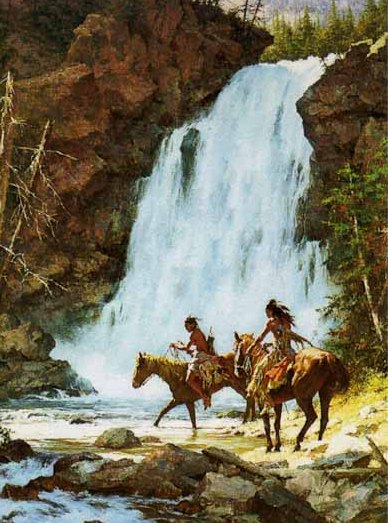 |
Horses were not native to North America, they were
brought from Europe by the settlers. By the eighteenth
century many Indian nations had horses. This meant that
they were able move onto the Plains and hunt the buffalo
that lived there more easily. Many tribes gave up farming and became solely reliant on the buffalo for all their needs. They lived a nomadic life following the buffalo herds as they moved across the Plains. |
|
The whites killed buffalo so there was not enough for the Indians, then they began to take over land that had always been used by the Indians. The whites also brought disease with them. A simple cold could make and Indian very ill and some even died. More than thirty different tribes lived on the Plains. Each had their own area of the Plains and although there was sometimes war between the different tribes, in the main they lived peacefully in their own areas. The map right shows the approximate location of the most famous tribes that inhabited the Great Plains.
|
 |







 The Nez Perce War
By Mary Lynn Bushong
The Nez Perce War
By Mary Lynn Bushong